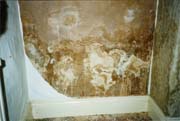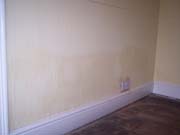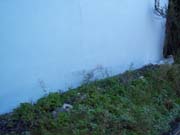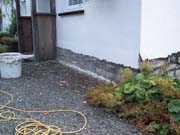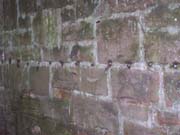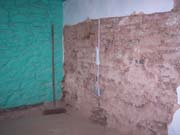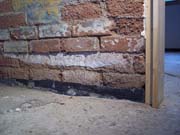damp proofing
The wet British climate means our buildings are permanently at risk of damage from water penetration. Many of our older buildings had no damp proof course incorporated at their time of construction, and many others from the early 20th century have damp courses which are now failing through age.
Rising damp
The inevitable consequence of rising damp is staining of decorations and spoiled wall plaster.
Externally, any render coatings that prevent access to the wall structure need to be removed to expose the mortar joints for damp course insertion which involves drilling holes at carefully selected positions, depths and angles to achieve maximum effectiveness.
Affected plaster needs to be taken off the internal walls which often reveals salt concentrations in the wall structure.
The damp proofing agent dissolves in the moisture in the mortar and forms a new damp course barrier, preventing further rising damp and providing protection to new plaster and decorations.
See also Lateral Penetration:
Above Ground Level »
Below Ground Level (Tanking) »
A thorough survey will be carried out by a PCA qualified  preservation surveyor to identify the type(s) and extent of damp present, identify causes, and specify the most practical, cost effective solutions in a detailed report. Our reports are accepted by all Mortgage providers. Fixed price treatments can be carried out by
preservation surveyor to identify the type(s) and extent of damp present, identify causes, and specify the most practical, cost effective solutions in a detailed report. Our reports are accepted by all Mortgage providers. Fixed price treatments can be carried out by  preservation, with most work covered by Guarantee.
preservation, with most work covered by Guarantee.
All treatments will be carried out by staff recorded on the Professional Biocide User Register.
The guarantee can be separately insured by GPI for its 10 year duration on payment of a one off premium.
More will be added from time to time, keep an eye on our site for further details!





